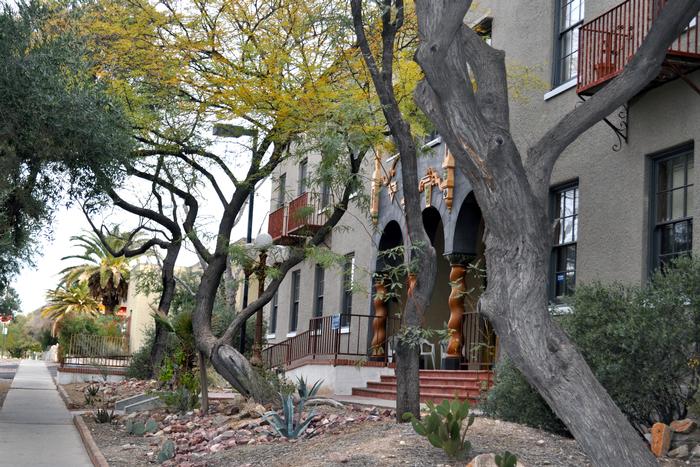Emma Survis ProposalGaining IdentityTucson is a vibrant town, alive with culture both ancient and contemporary. It is a town at war with itself, wishing to be of the barrio and of the suburb, of the Hispanic culture and of the Anglo-American culture. Thus, it is a rare building that can unite this community; that can weave cultures, traditions, values, and beliefs together into one rich fabric. The Historic Y is one such place that has the strength and ability to bring together this diverse community. Built by Annie Graham Rockfellow in 1930, the Historic Y is made of more than just whitewashed adobe; it is made of mutual ideas and shared beliefs. It provides the background for a multitude of community events that bridge the gaps between age, culture, and religion. From its location to the events happening within its historic walls, the Historic Y is a hub of activity. Prominently located near some of the most active parts of Tucson including Fourth Avenue and the University of Arizona, it becomes an important gathering place. But its significance stems from more than its location, it comes from the weight of what it stands for. It is home to architectural professionals, community service organizations, preforming arts groups, farmer’s markets, and classes. This space is so effective because the diversity of the groups using the space translates directly to the idea of coexistence, collaboration, and camaraderie. It is an excellent example of how much stronger place is, and how much stronger a group is when it consists of a fusion of many ideas rather than just one single idea. Tucson is such a melting pot and as the Historic Y so admirably demonstrates, embracing the diversity will make the whole much stronger. The constant stream of activity at the Historic Y is what makes it so successful; it has an intensity and energy that could not be found in an environment with less activity. This vigor is what not only draws people in but also what entices them to stay. And the true beauty of the Historic Y is that the people served by the Y are as diverse as the activities that take place there. It is a place of community gathering that opens doors to every person in the community. It provides opportunities for learning, for performing, for growing, and for developing new talents and skills. The importance of community is undeniable. Communities provide people with a feeling of safety and a belonging. Tucson is a multifaceted, sprawling town that needs to find a stronger sense of identity and kinship. The Historic Y is a stepping stone in that direction. Change comes slowly, but it comes from strong convictions and the belief that what you are doing matters. Tucson needs to find peace, to unite its intricate layers of people and beliefs. The public significance of the Historic Y is that it is a community, it represents solidarity and fellowship. It has brought people together to mature, to discover, and to bring change to Tucson as a whole. Additional Help and InformationAre you in need of assistance? Please email info@berkeleyprize.org. |
|

